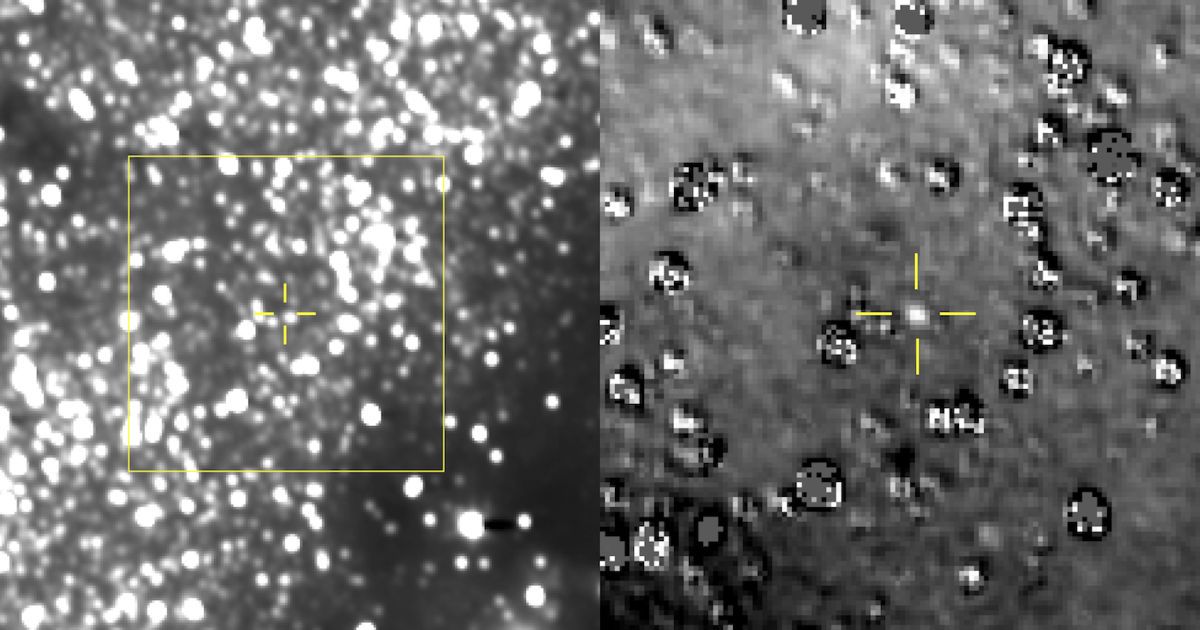It’s designed to make collecting drones of all sizes much easier.
Category: space – Page 998

What If A Rogue Planet Entered Our Solar System?
Scientists found a mysterious rogue planet roaming aimlessly outside our solar system. What if it came closer?
A vibrant Space Program will inspire millions of children
Robert Zubrin made his presentation to the Mars Society in 2018.
A vibrant space program will inspire millions of children to study science and technology so that they can be a space pioneer. Children are not inspired by lot of testing.
We are entering into an age of Great Discovery.


Physicists Just Made the Most Precise Measurement Ever of Gravity’s Strength
Gravity might feel strong if you drop a bowling ball on your feet, but is in fact the weakest force. Compare it to electromagnetism: the pull of all the Earth’s gravity can’t stop you from picking up a paperclip with a refrigerator magnet. That weakness makes gravity incredibly difficult to measure.
A team of scientists in China are reporting that they have now performed the most precise measurement of gravity’s strength yet by measuring G, the Newtonian or universal gravitational constant. G relates the gravitational attraction between two objects to their masses and the distance between them. The new measurement is important both for high-powered atomic clocks as well as the study of the universe, earth science, or any kind of science that relies on gravity in some way.

Small leak discovered on Russian side of International Space Station, NASA says
Small leak discovered on Russian side of International Space Station, NASA says originally appeared on abcnews.go.com
A small pressure leak was discovered on the International Space Station, according to NASA.
Flight controllers at mission control centers in Houston and Moscow began seeing signs of the leak Wednesday night when the six-member crew aboard the orbital outpost were asleep. Flight controllers monitored the situation until the crew awakened at their normal time Thursday morning since they were in “no danger,” NASA said in a press release.

New Horizons snags image of distant Kuiper Belt target a month early
After NASA’s New Horizons spacecraft collected a trove of data from its six-month-long flyby of Pluto, it set its sights on a much smaller object in the Kuiper Belt — an object dubbed 2014 MU69. Scientists believe MU69 will likely be a rather preserved outer solar system object, one that could provide clues as to how dwarf planets like Pluto may have formed billions of years ago. Now the New Horizons team reports that it has snapped a picture of its distance target and it did so weeks before MU69 was expected to be visible to the spacecraft.
New Horizons is still about 100 million miles away from MU69 and the researchers didn’t think they’d be able to see the small object with New Horizons’ onboard cameras until around mid-September. “We thought it’s worth giving it a shot a month early,” Hal Weaver, the lead scientist working with the New Horizons’ long distance camera, told the New York Times. Through a few dozen images, they were able to make out the very faint MU69, an object under 30-miles wide. Being able to see it will help scientists refine New Horizons’ trajectory, though since the object was right where they expected it to be, it appears the spacecraft’s path is already pretty spot on. “The whole team is jazzed now,” said Weaver.
The spacecraft is expected to reach MU69, also known as Ultima Thule, on January 1st, 2019. It will mark the first close-up exploration of a small Kuiper Belt object and will be the most distant exploration of a planetary body to date. “It really is like finding a needle in a haystack,” Weaver said in a statement about the images collected earlier this month. “In these first images, Ultima appears only as a bump on the side of a background star that’s roughly 17 times brighter, but Ultima will be getting brighter — and easier to see — as the spacecraft gets closer.”

They want moon landings to be a commercial reality — and that’s just the start
This article is part of Tech in Asia’s partnership with Disrupting Japan where we publish the revised transcripts from the show’s podcast interviews with Japanese entrepreneurs. This is heavily revised from the original transcripts. For the full interview, go here.

The International Space Station is leaking air
BREAKING.
NASA is working to contain a small leak onboard the International Space Station.
The issue appears to be contained and the people on board the station do not appear to be under any immediate threat. But it did trigger a real alarm through the floating lab, which sent astronauts scrambling to find the cause of the problem.
The crew was forced to check for the source of the leak by closing separate modules on the space station and finding which of them may be damaged. It was eventually tracked down in part of the Soyuz MS-09 spacecraft, which arrived at the station in early June carrying a crew of astronauts.